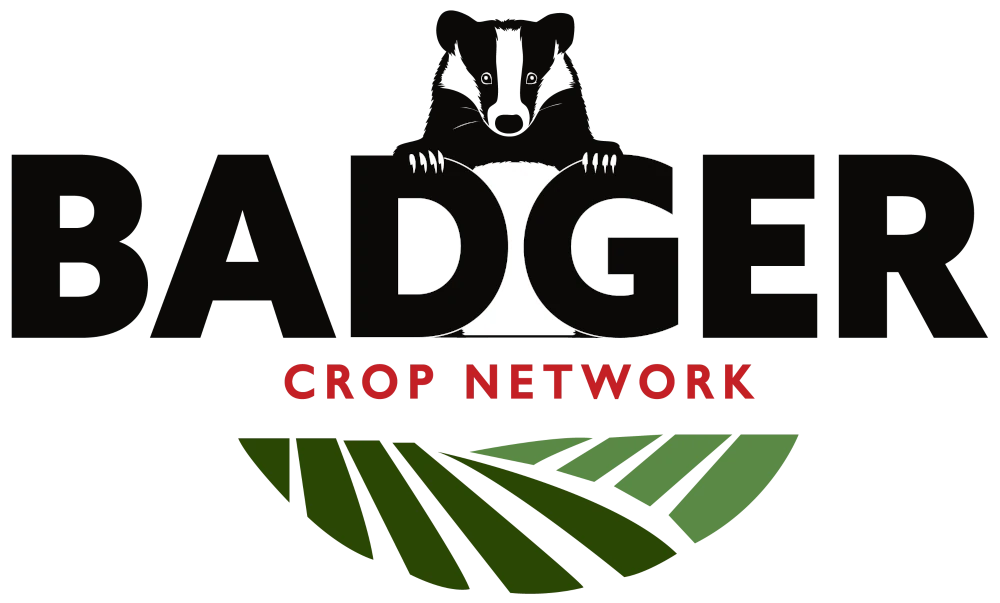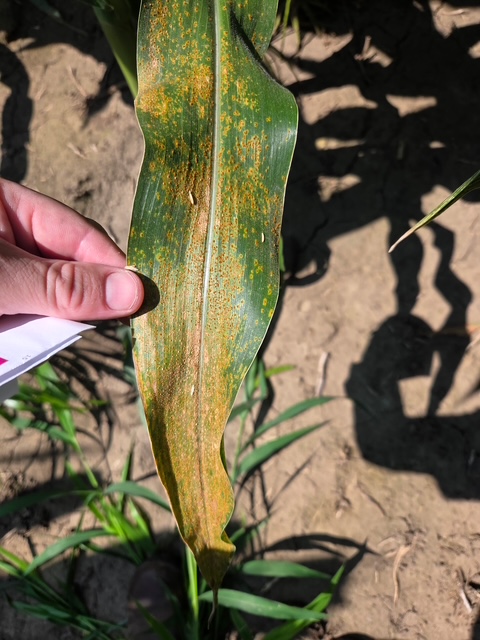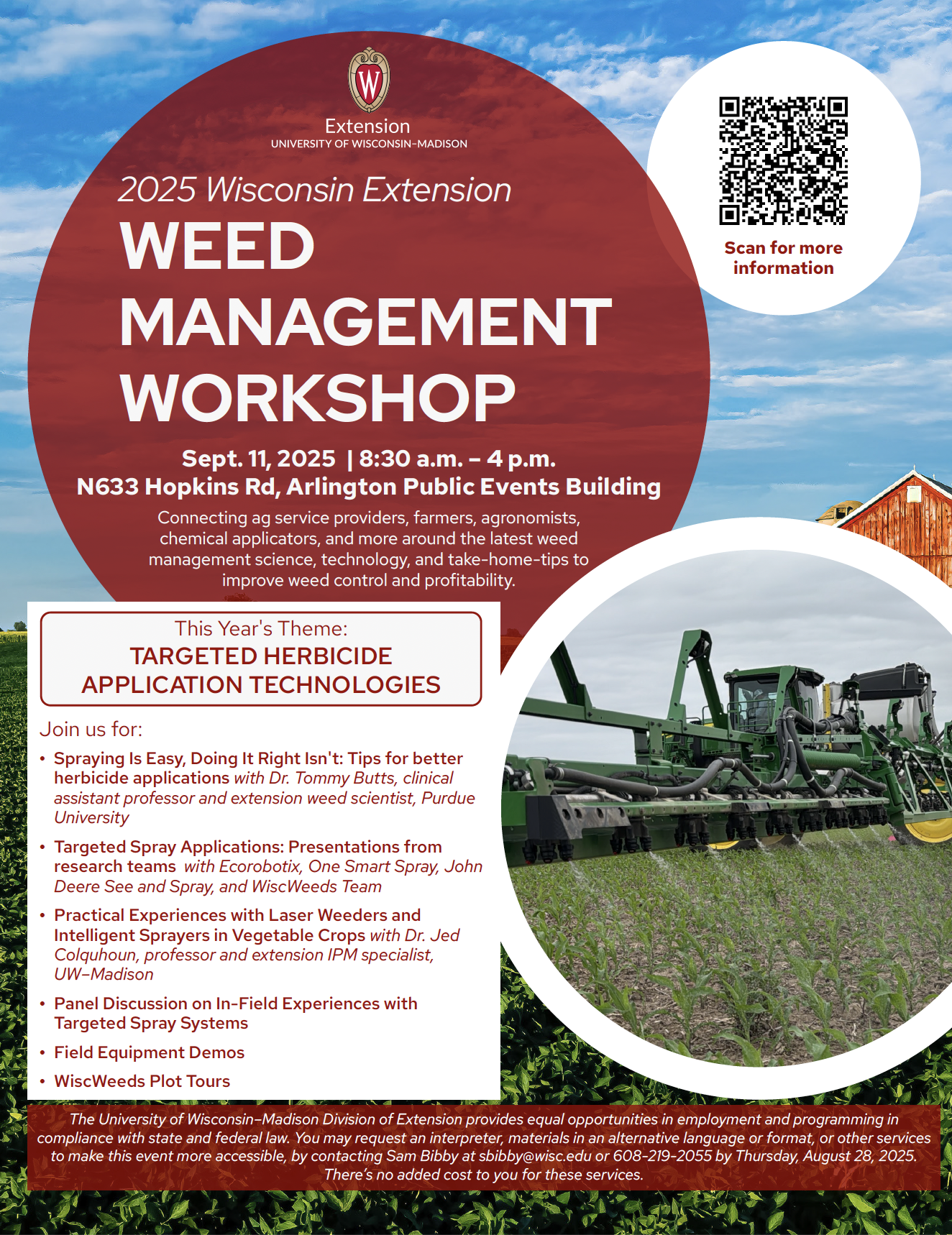Damon Smith, Extension Field Crops Pathologist, Department of Plant Pathology, University of Wisconsin-Madison
Shawn Conley, Extension Soybean and Small Grains Agronomist, Department of Plant and Agroecosystem Sciences, University of Wisconsin-Madison
Cool weather and dryer conditions have meant that winter wheat is moving through growth stages slower than this time last season. Winter wheat that I have scouted in the past week is mostly around Feekes 8 or 9 (flag leaf emerging or flag leaf out). At this time last season, many winter wheat fields had heads emerging or fully emerged.
The Stripe Rust Situation
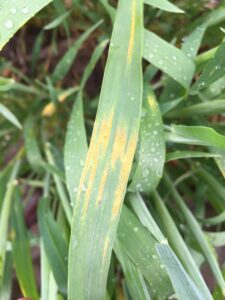
Figure 1. Stripe rust symptoms on a wheat leaf
With cooler weather and dryer conditions, disease has been reasonably minimal. I have observed just low levels of tan spot in one field. I have not received any other foliar disease reports as of yet. This includes stripe rust, which we were a bit concerned about heading into last winter. Stripe rust (Fig. 1) of wheat is caused by the fungus Puccinia striiformis. Stripe rust can be identified by orange/yellow pustules that typically occur in a striped pattern on the surface of the wheat leaf. However, under low severity, single, or very few sparsely spaced pustules may be observed. Subsequent infections can arise from a single pustule. Disease is favored by prolonged periods of rain (or dew), high relative humidity, and cool temperatures ranging from 50 to 60 ºF.
You might remember that last season, we had pretty high levels of stripe rust on susceptible varieties of winter wheat in Wisconsin. This meant that there was residual inoculum in the state during the fall of 2024. We did observe stripe rust on fall-planted winter wheat in October and November of 2024 in several fields. We marked these locations and have followed them closely this spring. The extremely cold conditions this past winter, combined with no or low snow cover, meant that the stripe rust we had observed last fall was killed. We have observed no “over-wintering” of the stripe rust fungus in Wisconsin.
As we approach heading, we continue to watch the stripe rust situation carefully. The current stripe rust Ag Pest Monitor shows numerous counties in Oklahoma and Kansas confirmed positive for stripe rust, along with a county in Michigan and one county in Ontario Canada (Fig. 2). These latter confirmations may be due to overwintering in those areas. We will continue to watch this situation carefully as we are approaching heading, which is a crucial time to control foliar and head diseases of winter wheat.
Management of stripe rust includes using resistant cultivars and applying fungicides. Although it is too late to make decisions on a cultivar, scouting should be prioritized to fields where you know there was a susceptible cultivar planted. If stripe rust pustules are observed, consider sending samples to the University of Wisconsin Plant Disease Diagnostic Clinic for positive identification. If stripe rust is confirmed and it appears to be active, a fungicide application might be necessary.
In recent years in Wisconsin, we have not needed to apply a fungicide before the Fusarium head blight timing of Feekes 10.5.1. However, in years when stripe rust starts early, research has demonstrated that an application at the flag leaf emergence timing (Feekes 8) helps to protect grain yield. For more information on growth-staging wheat, check out the “Visual Guide to Winter Wheat Development and Growth Staging.”
In our work titled “Wheat grain and straw yield, grain quality, and disease benefits associated with increased management intensity” we found that years with intensive stripe rust epidemics (2016 and 2017) a fungicide application at Feekes 8, in addition to a second application of fungicide at Feekes 10.5.1, helped to protect yield at the end of the season. In years where there was no stripe rust, a Feekes 8 application of fungicide was not needed, but an application at Feekes 10.5.1 almost always provided a positive return on investment.
The Fusarium Head Blight Situation
That brings us to the Fusarium head blight (FHB; scab). Fusarium head blight (FHB) has typically been a more frequently occurring issue in Wisconsin. However, in recent years, our spring seasons have been exceptionally hot and dry leading to little disease. However, this season is shaping up a bit different with low-to-moderate temperatures and more precipitation expected over the next 7-10 days. Not only is the disease yield limiting, but the fungus that causes FHB can also produce the mycotoxin called deoxynivalenol (DON or vomitoxin). DON contamination above 2 ppm in finished grain can often lead to discounts at the elevator or outright rejection. Thus, this disease is worth managing.
Fortunately, we have some excellent in-season management options for FHB. Be sure you know the relative susceptibility of the varieties you have planted. We have excellent data showing significant reductions of FHB where we use a resistant variety and then layer a fungicide application on top. Varietal resistance works!
When it comes to fungicides for FHB, there are really just five products to choose from that are rated as “Good” on the “Fungicide Efficacy for Control of Wheat Diseases” table (Fig. 3). Timing is everything when using a fungicide for FHB management. Be sure to time applications at the start of anthesis or within 5-7 days after the start. This is the ideal window of opportunity to control FHB and reduce DON levels in the finished grain. Spraying earlier than anthesis or later than about a week after the start of anthesis will result in lost efficacy, or no control of FHB. If you need help with growth staging, be sure to check out the “Visual Guide to Winter Wheat Development and Growth Staging.” Also, the fungicides rated “G” for FHB in the fungicide efficacy table are effective against stripe rust, so if that disease happens to move in around heading, a single application of fungicide at the anthesis timing should take care of both problems.
There is a disease prediction tool for FHB of wheat. You can find that tool at http://www.wheatscab.psu.edu. This tool should be monitored frequently as your crop approaches anthesis and soon after. It can help you determine if your crop is at risk, based on the weather conditions. Risk as of May 19, 2025, for FHB-susceptible winter wheat varieties is estimated to be low (Fig. 4). However, we are going to start seeing more frequent rain and moderately warm temperatures, I would suspect the FHB risk will rise for Wisconsin in the coming weeks. Pay attention to the weather and any reports of stripe rust and FHB as we move toward heading in winter wheat.
The ‘Take Home’ for wheat management over the next several weeks.
- Continue to scout for stripe rust and apply a fungicide if found, especially on a susceptible variety.
- Plan to apply an FHB fungicide application – especially on susceptible varieties
- Shoot for Anthesis or up to 5-days after the start of anthesis for the fungicides rated “G” for FHB in this table.
- All of the available fungicides rated for FHB are also effective against stripe rust. Thus, one fungicide can manage both problems!
- You can go slightly earlier (Feekes 10.5; Efficacy slightly reduced compared to typical timing) up to 5-days after the start of anthesis for Miravis Ace to manage FHB.
- Watch the “Scab Alerts” – it isn’t perfect but can help you plan (http://www.wheatscab.psu.edu).
